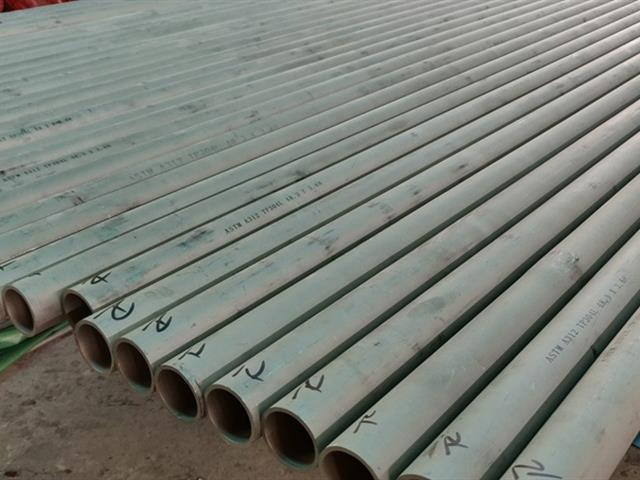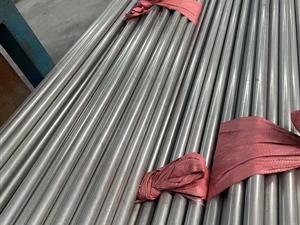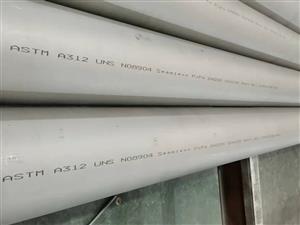|
Grade |
C |
SI |
Mn |
Cr |
Ni |
S |
P |
|
304 |
≤ 0.08 |
≤1.00 |
≤2.00 |
18.00-20.00 |
8.00-11.00 |
≤0.03 |
≤0.045 |
|
304L |
≤0.035 |
≤1.00 |
≤2.00 |
18.00-20.00 |
8.00-12.00 |
≤0.03 |
≤0.045 |
|
304H |
0.04-0.10 |
≤1.00 |
≤2.00 |
18.00-20.00 |
8.00-11.00 |
≤0.03 |
≤0.045 |
TP304L/1.4307/S30403/SUS 304L/00Cr18Ni10 Chemical Composition
TP304L/1.4307/S30403/SUS 304L/00Cr18Ni10 Mechanical Properties
|
Material |
Tensile Strength ksi(MPa) |
Yield Strength ksi(MPa) |
Elongation (%) |
Hardness Brinell/Vickers |
Hardness Rockwell |
|
304 |
≥75(515) |
≥30(205) |
≥ 35 |
≤192HBW/200HV |
≤90HRB |
|
304L |
≥70(485) |
≥25(170) |
≥ 35 |
≤192HBW/200HV |
≤90HRB |
|
304H |
≥75(515) |
≥30(205) |
≥ 35 |
≤192HBW/200HV |
≤90HRB |
TP304L/1.4307/S30403/SUS 304L/00Cr18Ni10 Applications
-
304L stainless steel pipes have several applications across industries. They are often used in the following areas:
- Food and Beverage Industry:
- 304L stainless steel pipes find use in food processing, beverage production, and dairy equipment.
- Their corrosion resistance ensures safe handling of consumables.
- Pharmaceutical Industry:
- Pharmaceutical manufacturing relies on 304L pipes for fluid transfer, storage, and cleanroom applications.
- The material’s hygienic properties are essential.
- Chemical Manufacturing:
- 304L pipes are suitable for conveying corrosive chemicals, acids, and alkalis.
- They maintain integrity even in aggressive environments.
- Automotive Structures:
- In the automotive industry, 304L pipes are used for exhaust systems, mufflers, and catalytic converters.
- Their high-temperature strength and corrosion resistance are crucial.
- Architectural Applications:
- 304L stainless steel is employed for structural purposes such as handrails, architectural finishes, and other details.
- Its versatility makes it a popular choice.
Remember that 304L stainless steel combines corrosion resistance, ease of fabrication, and broad applicability, making it a valuable material in various sectors!
One of our Services--Testing
- EN 10204/3.1B, EN 10204 3.1 and EN 10204 3.2 Material Test Certificates (MTC)
- Raw Materials Certificate
- 100% Radiography Test Report
- 100% PMI
- Heat Treatment Charts
- Third Party Inspection Report
- Surface roughness and size measurement
- Manufacturer Test Certificate( Impact Testing, Flatten, Spin,Curve, Hardness, Intergranular ,Point corrosions, Grain size, ET,UT, HT...)
- Laboratory Test Certificate from Govt. Approved Lab
- ......
One of our Services--End of Pipe and Tube
- BE : Beveled end
- BBE : Bevel both ends
- BLE : Bevel large end
- BSE : Bevel small end
- TOE / POE = Treaded One End / Plain One End
- TOE / BOE = Treaded One End / Beveled One End
- POE / BOE = Plain One End / Beveled One End
- TBE = Treaded Both Ends
- PBE = Plain Both Ends
One of our Services--Packing
- Ply Wooden Boxes
- PE Fabric Bundles
- Standard seaworthy export packing
- Plastic Bags, or as required
One of our Services--Marking
- Supplier / Manufacturer Name or Custom Logo - on request
- Specification
- Material Grade
- Nominal Size
- Schedule or Wall Thickness
- Method of Manufacturing (Seamless or Welded)
- Heat Number
Marked Pipe Sample: XTD ASTM A312 TP304L SEAMLESS 42.2x 3.56*6000MM HEAT NO. 2023121205A15
TP304L/1.4307/S30403/SUS 304L/00Cr18Ni10 Material Summary
304L has good resistance in:Organic acids at moderate temperatures,Salt solutions, e.g. sulphates, sulphides and sulphites, Caustic solutions at moderate temperatures, Oxidizing acids like nitric acid
The stainless steel alloys AISI 304 and AISI 304L are the best known and most widely used chromium-nickel steels. Their excellent corrosion resistance, high strength and low carbon content make these austenitic steels particularly suitable for applications requiring welding.
304, 304H and 304L all possess the same nominal chromium and nickel content and thus possess the same corrosion resistance, ease of fabrication and weldability. The difference between 304, 304H and 304L is the carbon content which is >0.03, >0.05 and <0.03 respectively.
The carbon content of 304H (UNS S30409) is restricted to 0.04–0.10%, which provides optimal high temperature strength.
The carbon content of 304L (UNS 30403) is restricted to a maximum of 0.03%, which prevents sensitization during welding. Sensitization is the formation of chromium carbides along grain boundaries when a stainless steel is exposed to temperatures in the approximate range of 900–1,500 °F (480–820 °C). The subsequent formation of chromium carbide results in reduced corrosion resistance along the grain boundary leaving the stainless steel susceptible to unanticipated corrosion in an environment where 304 would be expected to be corrosion resistant. This grain boundary corrosive attack is known as intergranular corrosion.
The carbon content of 304 (UNS 30400) is restricted to a maximum of 0.08%. Thus 304 is not useful for corrosive applications where welding is required such as tanks and pipes where corrosive solutions are involved, thus, 304L is preferred. And its lack of a minimum carbon content is not ideal for high temperature applications where optimal strength is required, thus, 304H is preferred. Thus 304 is typically restricted to bars that will be machined into components where welding is not required or thin sheets that are formed in articles such as kitchen sinks or cookware that are also not welded.
Carbon content has a strong influence on room temperature strength and thus the specified minimum tensile properties of 304L are 5 kilopounds per square inch (34 MPa) lower than for 304 (515 MPa). However, nitrogen also has a strong influence on room temperature strength and a tiny addition of nitrogen produces 304L with the same tensile strength as 304. Thus, practically all 304L is produced as dual certified 304/304L, meaning it meets the minimum carbon content of 304L and also meets the minimum tensile strength of 304.





